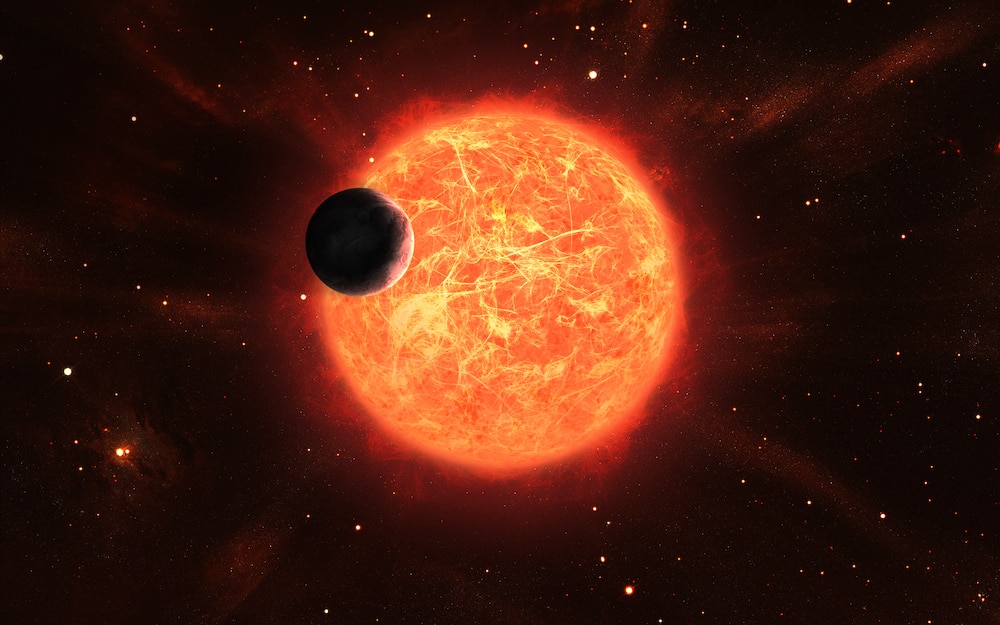Create a free profile to get unlimited access to exclusive videos, sweepstakes, and more!
Monstrous red giant caught moments before going supernova
Some stars may go gently into that good night, but some...don’t.

What do stars do before they die? They obviously don’t plan their funerals, but no one had ever seen a red supergiant breaking out into violent death throes right before it went supernova — until now.
When astronomers observed the final days of this megastar, they saw something which was no less than intense. Supernova 2020tlf was observed for the last 130 days of its life (hardly a blink of an eye for a star that’s seen some things). It seemed to decline in agony, flaring and spewing out interstellar gas. This isn’t the quiescent ending these types of stars were thought to have. Some may go gently into that good night, to quote Dylan Thomas, but some apparently don’t.
This star was obviously raging and raging against the dying of the light. Encompassing 10 solar masses, it was 120 million light years away in the galaxy NGC 5731, and kept releasing extremely luminous emissions until it finally blew up. Observations made at the W.M. Keck Observatory and Pan-STARRS by Wynn Jacobson-Galán of UC Berkley, who led a study recently published in The Astrophysical Journal, and his research team proved that not all red giants accept their fate.
“This is going to make astrophysicists think more about what could be happening inside of red supergiants in their final year before explosion, which could possibly cause these stars to expel so much stellar material (and become very luminous) prior to going supernova,” he told SYFY WIRE.
Watch the star about to blow below, but prepare to have your mind blown:
(Credit: W. M. Keck Observatory/Adam Makarenko)
Previously, nothing weird had ever been seen going on with a red supergiant pre-supernova. There had been no direct detection of activity in any of these stars doomed to collapse into Type II supernovas, which are only found in star-forming regions and thought to be the result of core collapse in megastars. They do release hydrogen into space when they detonate, though stars going through this process aren’t thought to vomit gobs of hydrogen into space before they even explode. Supernova 2020tlf’s dying thrashes obviously crushed that expectation.
Jacobson-Galán and his team got a read on an early spectrum of 2020tlf through Keck’s LRIS (Low Resolution Imaging Spectrometer). This observation set the supernova apart as the impending death of a monstrous star, which had already ditched most of its outer layers, and the gas that it was getting rid of was emitting massive amounts radiation. LRIS also revealed the supernova shockwave it released crashed into all that stellar vomitus. You could say this star was going wild as if there would be no tomorrow, because it didn’t have many tomorrows left.
“The ejection of stellar material may come from waves inside the massive star that are formed during the final stages of stellar evolution,” said Jacobson-Galán. “When the red supergiant is creating heavy elements like oxygen or silicon through fusion, fusion processes can generate stellar waves that carry an enormous amount of energy and can cause the star to eject gas.”
This hasn’t been proven yet, but it is possible. Supernova 2020tlf could possibly provide more insight into what happens in the innards of a star right before an explosion. The core of a red supergiant seems to be capable of generating gravity waves that eventually blast through the star with so much energy that they might be the reason for so much expulsion of stellar stuff. Whether this actually happens remains to be seen. It might only occur in some red supergiants, which would explain why this one acted up the way it did before giving up the ghost.
“The biggest unknown about red supergiants has always been what are these stars doing before they violently collapse and explode as supernovae,” Jacobson-Galán said. “There’s definitely plenty to work on, and the future is bright.”


























